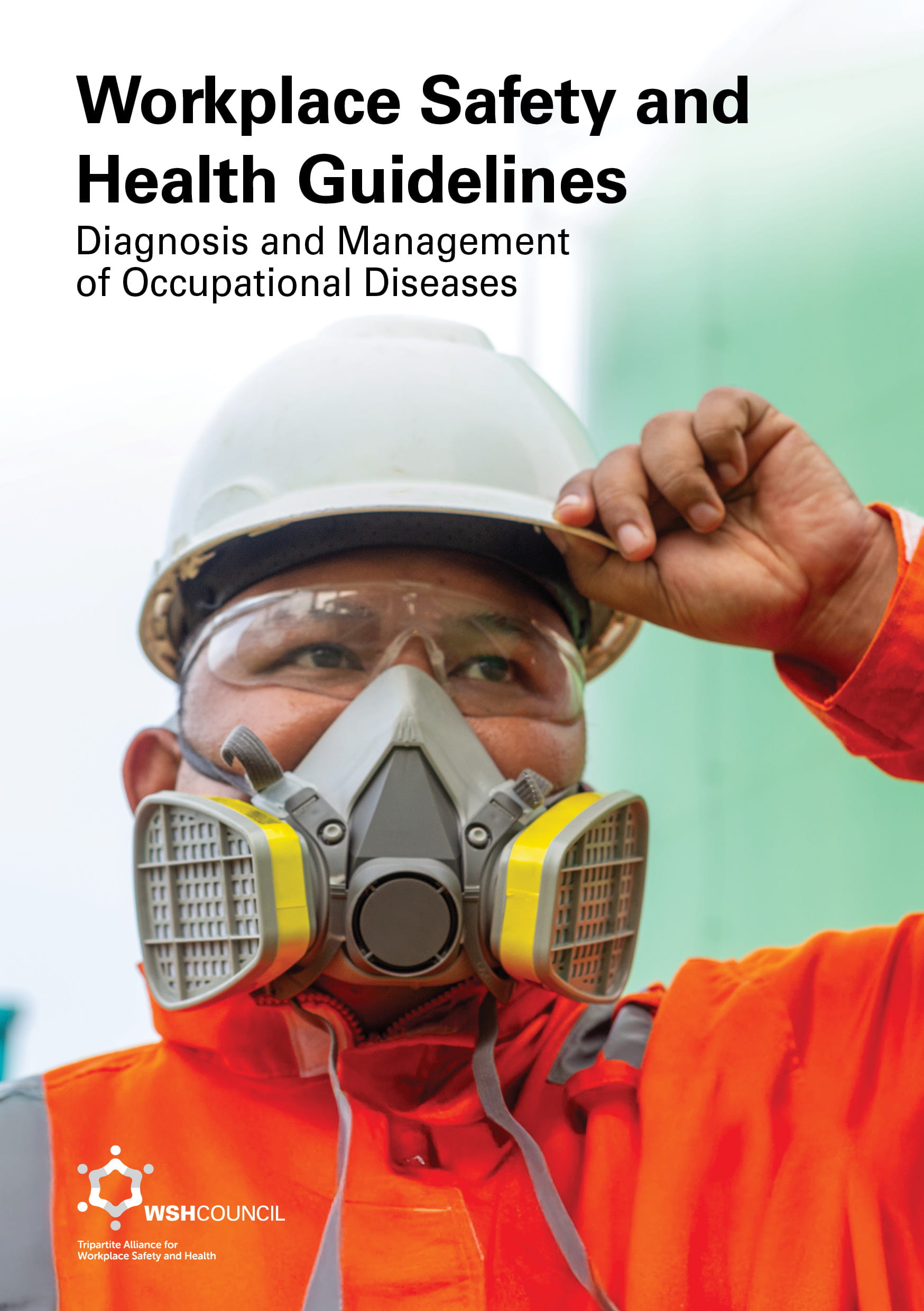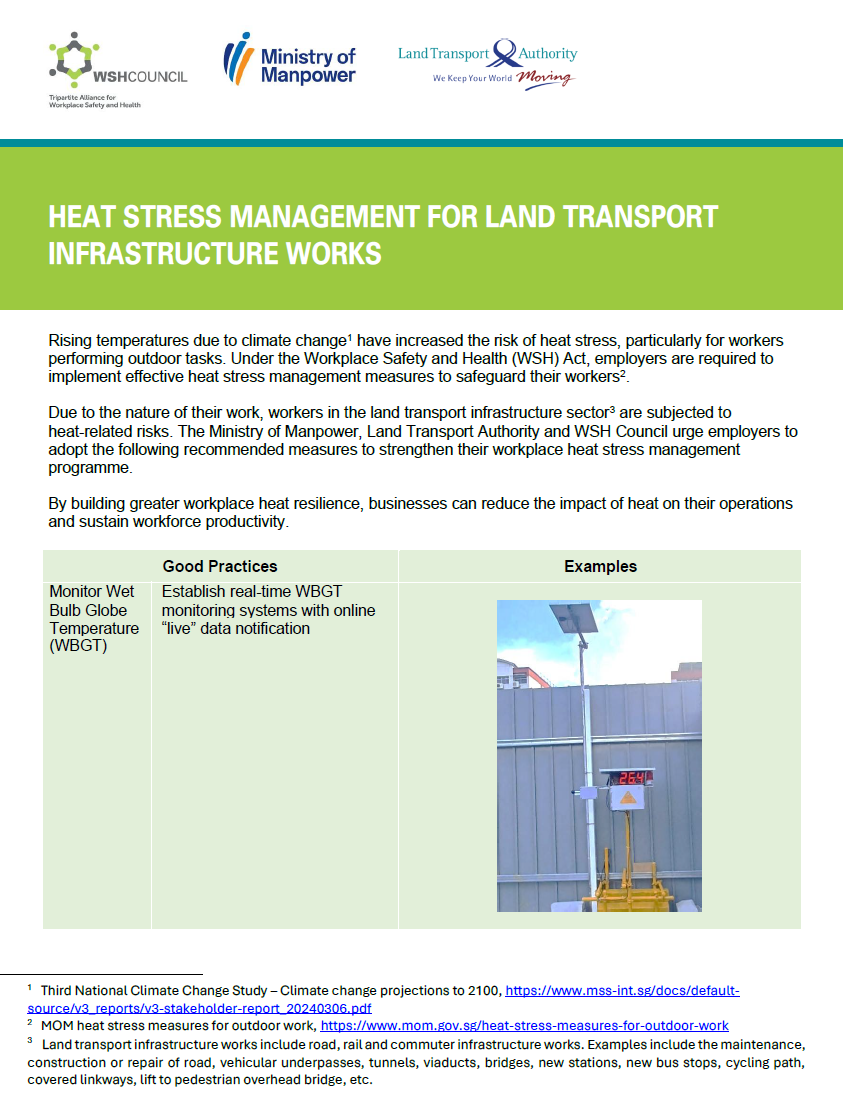Heat Stress Management
Heat Stress at Work
Working in Singapore’s hot and humid weather puts you at risk of heat stress.
Heat stress occurs when the body is unable to remove excess body heat, leading to an increase in the body’s core temperature and resulting in heat-related illnesses.
Heat stress related illnesses include heat cramps, heat exhaustion and heat stroke, with heat stroke being potentially fatal.
Preventing Heat Stress
Heat stress must not be overlooked, and you should take the necessary measures to protect yourself from heat-related risks.
Prevention Tips:
- Do not over-exert yourself in the first two weeks of work, especially if you have just arrived from a cooler country.
- Acclimatise yourself to the hot weather by gradually increasing heat exposure over at least seven days.
-
Wear loose-fitting and light-coloured clothes when outdoors.
- Work under the shade where possible.
- Rehydrate yourself by drinking at least 300ml of water every hour.
- Take regular breaks in cool and shaded areas.
- Sponge yourself with water during breaks or meals.
- Look out for your co-workers, should they show signs and symptoms of heat stress.
- Adopt a healthy lifestyle with proper meals and sleep.
Monitor the Wet Bulb Globe Temperature
In workplaces where outdoor work is carried out primarily, occupiers and employers should monitor the Wet Bulb Globe Temperature (WBGT) hourly, especially during the hotter periods of the day.
Employers should then implement appropriate heat stress measures according to the WBGT band based on the four aspects of “acclimatise, drink, rest and shade” to reduce heat stress risks for outdoor workers. Refer to the Ministry of Manpower’s Heat Stress Measures for Outdoor Work and Infographic on Heat Stress Measures for Outdoor Work on the appropriate measures.
Helping Someone with Heat Stroke
If you notice someone with signs of heat stroke, call 995 for an ambulance immediately. While waiting for the ambulance, you should:
- Move the person to a shady or cooler area;
- Loosen or remove the person’s clothing;
- Apply cool water on and fan on the person; and
- Place ice packs under the person’s armpits and groin area.
Reporting Heat-Related Illnesses
Under the Workplace Safety and Health (WSH) Act, employers are required to report any heat-related illnesses (HRIs) as “diseases caused by excessive heat”.If you suspect that your worker may be suffering from an HRI, please seek medical attention immediately. For more information, please refer to Reporting Heat-Related Illnesses: Information for Employers. If need be, you may print this document for your worker to share it with their doctor.
Additionally, you can use the Heat-Related Illness Evaluation Form to gather important information about workers who have suffered from HRIs. In doing so, you can identify and address risk factors, to prevent similar incidents in the future.
For More Information
- WSH Guidelines on Managing Heat Stress in the Workplace (PDF)
- Heat Stroke Card (PDF)
- ABC Checklist – Working Safely in Hot Environment (PDF)
- Heat Stress Management Compliance Checklist
- Monitor and Manage Heat Stress at Workplace poster
- Guidelines on Wet Bulb Globe Temperature (WBGT) Monitoring for Outdoor Work






